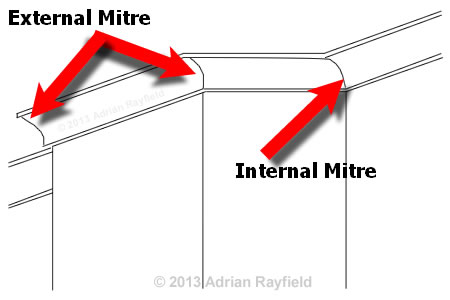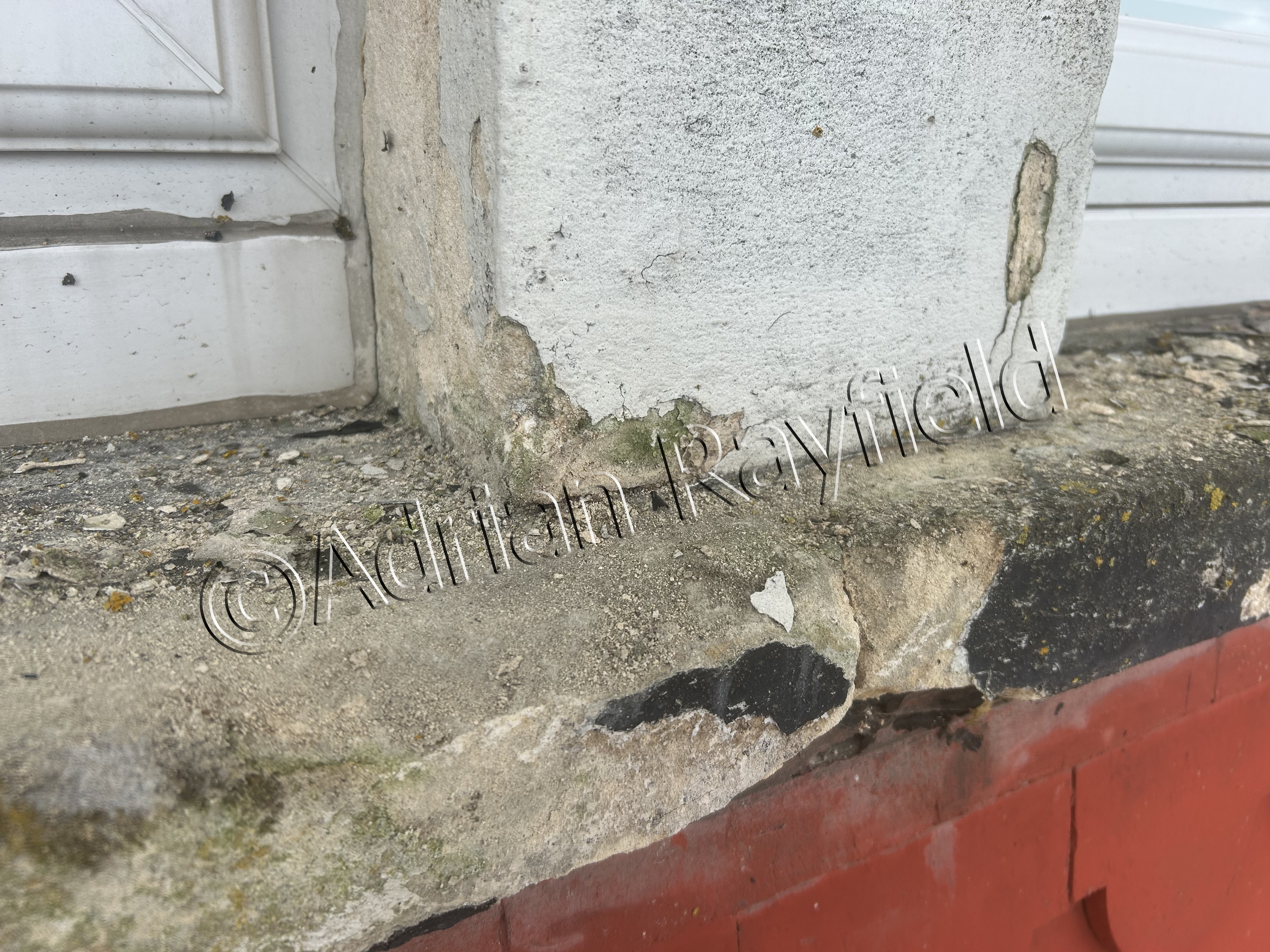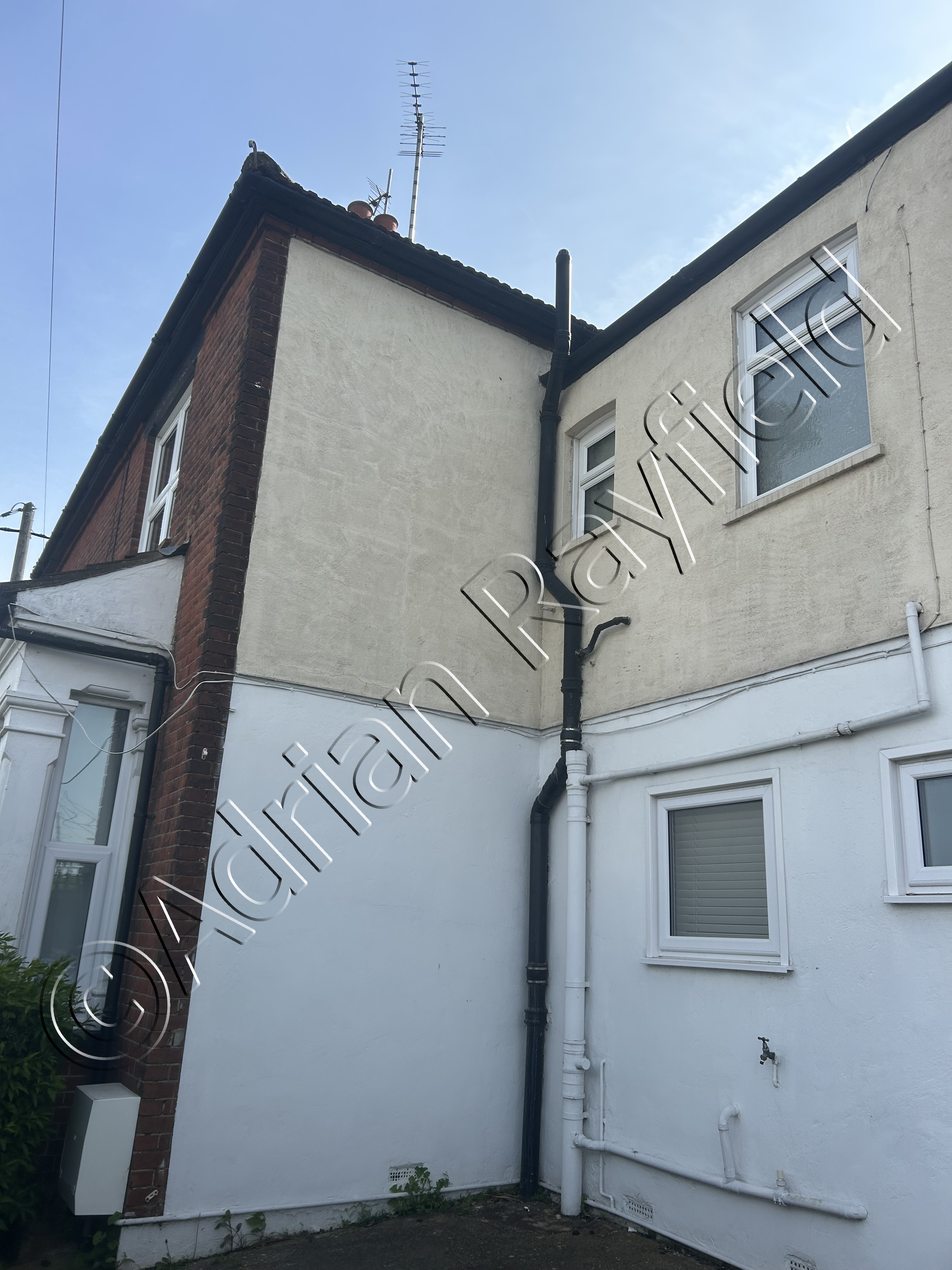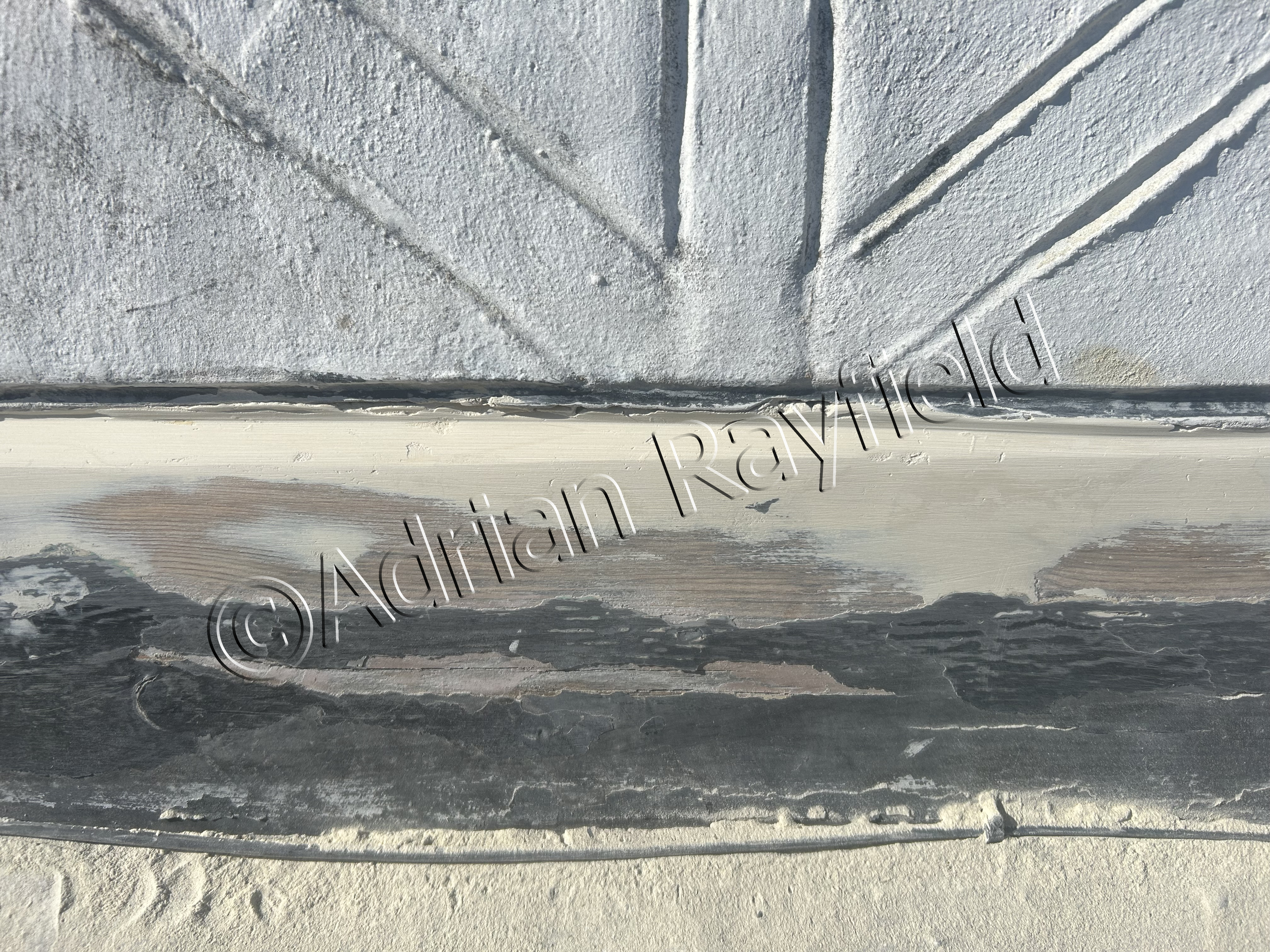Painting, decorating and home improvement tips blog
Definitely not a grey day
Posted by Adrian
August 30th, 2023
Definitely not a grey day
Thankfully the British summer was on my side for a few days allowing me to paint this exterior. It definitely needed a bit of TLC as the external of this property hadn’t been painted for some years. And as such had deteriorated to the point that certain areas of the woodwork had sucome to rot.
The property needed scaffolding on the front and part of the side elevation’s due to the limited access for a ladder and for the height of the apex section on the front elevation. This was sourced by the client and erected before work began.

Repairs
After some repairs were carried out to the masonry and woodwork, a fair amount of wood filler was used, the woodwork, masonry and carport were all painted to the clients specification and colour choices.
I always work closely with the clients and advising them on such things as if scaffolding is required and where, and also the colour choices and the best types of paints to use, this is the best way to have a good client relationship and at the end of the day everyone is happy and knows what to expect by the end of each day, and the completion of the job.
The results
Once the work was all complete, the client was very happy with the results, saying, “I am delighted with the work you have done”. You can see the before, during and after in the pictures below.
Tags: advice, apex, before and after, carport, Decorating, Dulux, Exterior, External, Filler, fillers, Masonry, masonry paint, Paint, Painting, Property, rot, rotten wood, scaffolding, wood filler, Woodwork
Posted in Home Improvements, News | No Comments »
How to fit coving and why use it
Posted by Adrian
March 24th, 2013
How to fit coving and why use it
Coving or cornice is very popular, it comes in a wide range of styles, sizes and made from a variety of materials such as plaster or polystyrene. A lot of you may have coving in your house, it helps break up the hard edge between the wall and ceiling and gives a nice aesthetic decorative look. You may have a plain concave coving or something more fancy such as egg and dart or Swag and Bow.
How to fit coving
To fit your chosen coving you will need the appropriate cove adhesive, this maybe a lightweight coving adhesive or a powder ‘mix your own’ adhesive for heavier paper faced plaster coving or just plaster coving. You will also need to cut mitres in each or the internal and external corners, it is easier if you use a mitre block or mitre tool that the coving manufacturer make.
Mark the ceiling and wall as described in the instructions as your guide lines, where the lines go will depend on the size of coving. You will need to measure the length of the wall and cut the coving and mitres accordingly, do this around the room until you have all the lengths cut, now mix enough adhesive up (if you need too) to fix a couple of lengths of coving as the adhesive will harden fairly quickly and be unworkable.

Apply adhesive to both edges of the back of the coving noting which is the wall and ceiling edge, this will be printed on the back of the coving. Once the adhesive is applied, push the length into place. Push the coving fairly hard to squeeze out the adhesive so it has a good bond to wall and ceiling. Use a scraper to remove the excess adhesive and a paint brush or sponge to wipe down the face of the coving.
Use adhesive to fill in joints and mitres, continue with the coving in this way until you are done. Leave the coving to dry overnight and then lightly rub down the joints and mitres, then apply 3-4 coats of emulsion to get a good coverage.
Why fit coving
Coving is primarily used in modern homes as a decorative item but it does cover up the nasty looking crack you often get between the ceiling and wall line, this crack is caused my movement in the house, nothing to worry about it is perfectly natural. The house expands and contracts as it gets hot and cold, the crack is caused by the movement of the two.
Coving can also add a nice soft edge rather than a hard edge and make a room look softer and more welcoming. If you are thinking of decorating a room, why not consider adding some coving.
Rooms with low ceilings suit smaller coving such as a 90mm but high ceiling rooms can go for 127mm or larger.
For a list of types of profiles and a little more information about coving, take a look at Wikipedia.
For more in-depth instructions on fitting coving, take a look at the article I wrote on our DIY By Design blog about how to fit coving.
Tags: Concave, Cornice, Cove Adhesive, Coving, Egg and Dart, External, Internal, Plaster, Swag and Bow
Posted in Decorating Tips | No Comments »













